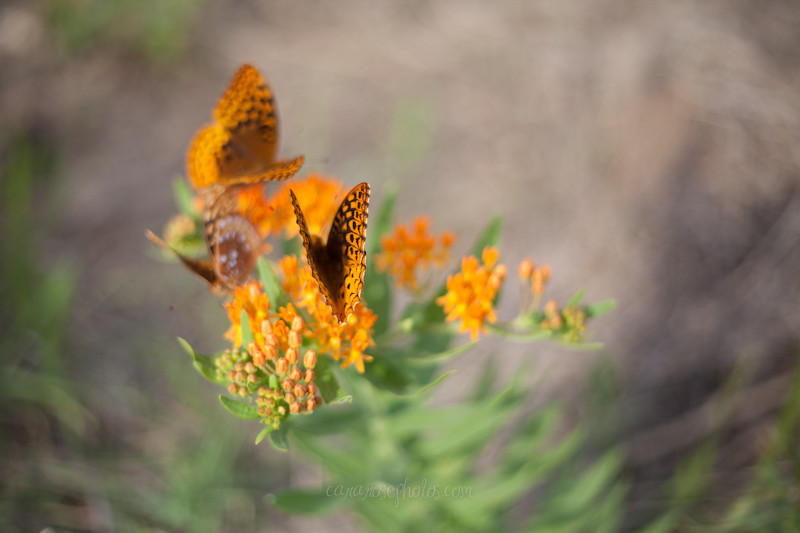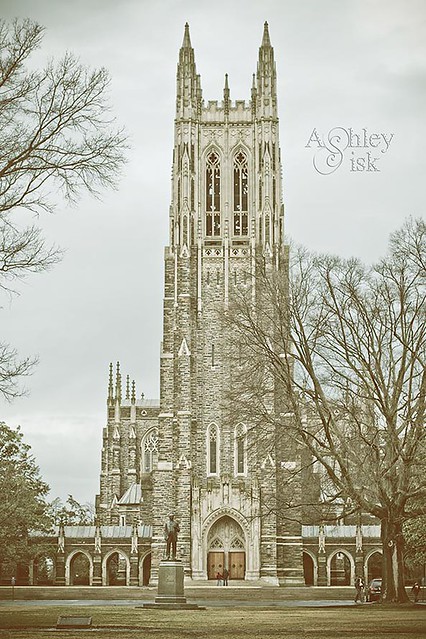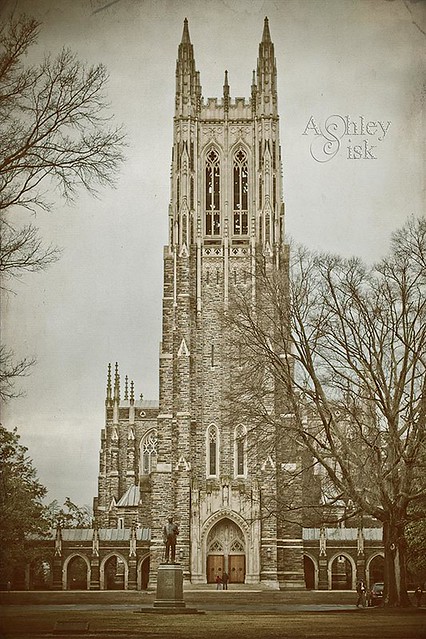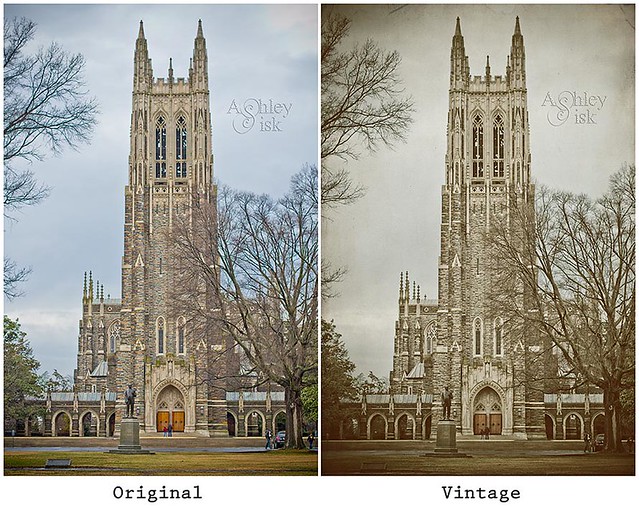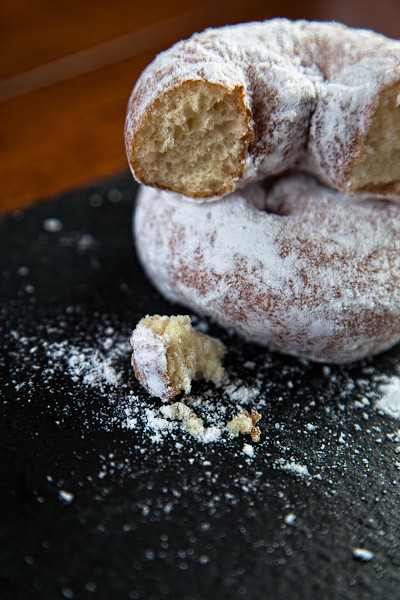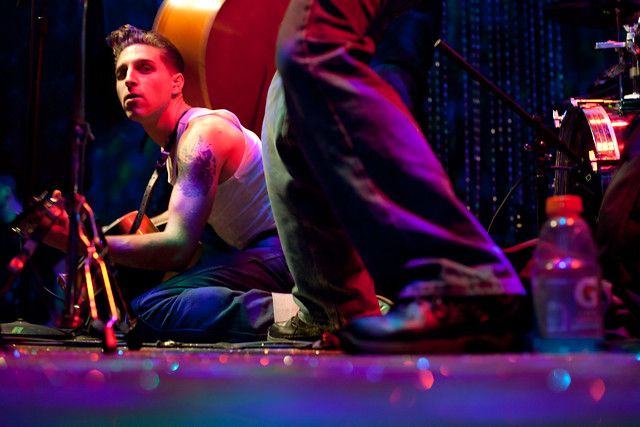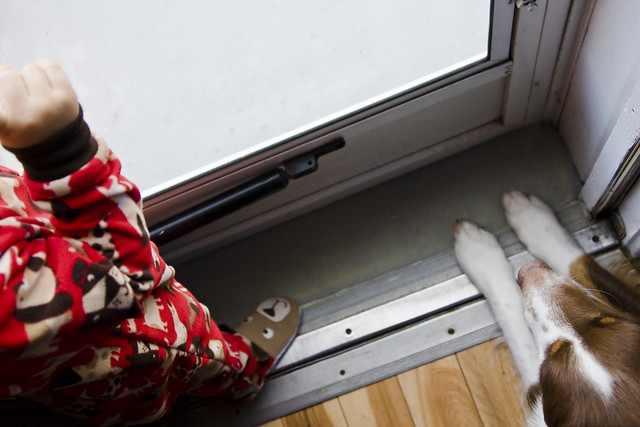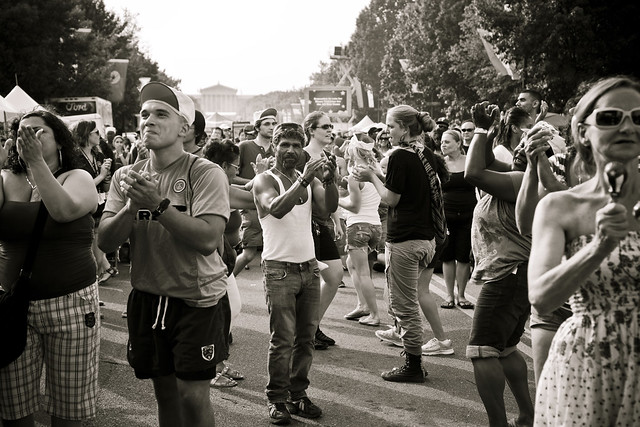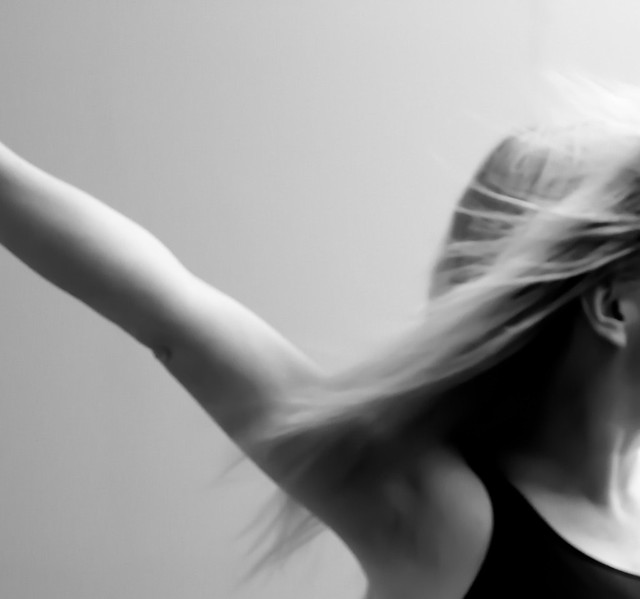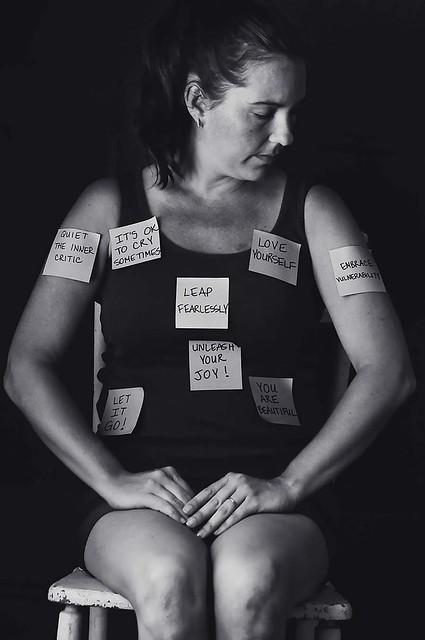Showing posts with label muse university. Show all posts
Showing posts with label muse university. Show all posts
Thursday, May 31, 2012
muse university: change
If you are anything like me, you are not content to maintain the status quo. I'm always looking to make improvements, find better ways to do things, and simply try something new or else I get bored! With photography, it is no different. Once I learn how to do one technique, I'm on to the next. Conquered, mission accomplished, been there, done that, where's my next challenge? It started two summers ago when I first saw shaped bokeh, you know, those little stars and hearts that were all the rage? I was like a dog with a bone, determined to figure it out, unable to try anything else until I did, frustration be darned. But once I figured it out, I put it in my arsenal, and moved on to the next new technique.
Sometimes, you get to the point where you know you need a change, but you aren't sure where to go or what to try next, you just know that what you are currently doing doesn't feel as satisfying anymore.
Here is a list of things to try to change the way you look at things, and maybe find some new inspiration:
1. Change your perspective. Try shooting from down on the ground, or from above your subject.
2. Change your composition. We all fall into the trap of letting our autofocus points control our compositions. Use manual focus or autofocus lock on your camera so that you can focus with the autofocus point but then move your camera, within the same focal plane, to recompose the overall frame. You might come up with a really unique composition, for example, your subject in the bottom left corner, with tons of negative space in the rest of the frame.
3. Change your focus. If you always shoot autofocus, try manual, and vice versa.
4. Change your subjects. Shoot something you've never shot before, maybe something that seems boring even! You'd be surprised at how you might see it in all new eyes once you start photographing it!
5. Change your exposure. Again, if you are using auto a lot, or using aperture priority, your camera is programmed to get you an ideal exposure that is perfectly balanced. Add some mood by underexposing, or add some glowy light by overexposing.
6. Change your choice of weapon. Try film if you shoot digital all the time. Try your iphone for more candid possibilities.
I hope this helps to motivate you as we transition from spring into summer and have to find inspiration in new places!
Happy Snapping!
Cara of CaraRosePhotos
Labels:
cara,
muse university
Friday, April 6, 2012
muse university: vintage processing
Earlier this year, I started a new tutorial piece on my blog called Tutorial Tuesday. The intent is to stretch our shooting and editing skills...and since I am constantly trying to learn something new with regard to my own processing, I've had a blast picking up new tools for my bag of tricks. A few weeks ago, I shared a tutorial on vintage processing. I thought it might be interesting to revisit that tutorial using a different image for muse university.
In order to fully utilize this tutorial, you'll need some version of Photoshop. Although most of the steps can be performed in Photoshop Elements, there will be a couple of steps in this tutorial that will not work for PSE users (still try it - I'll offer some alternative approaches). If you're more of a video tutorial kinda person, click HERE.
Here's my original shot (taken at Duke Chapel in Durham, NC earlier this year):
In order to fully utilize this tutorial, you'll need some version of Photoshop. Although most of the steps can be performed in Photoshop Elements, there will be a couple of steps in this tutorial that will not work for PSE users (still try it - I'll offer some alternative approaches). If you're more of a video tutorial kinda person, click HERE.
Here's my original shot (taken at Duke Chapel in Durham, NC earlier this year):

For many of you, the original image looks great and you would upload to Flickr and be done. I completely appreciate those who prefer a clean and natural approach (it's much quicker and easier). But for those of us that like to do a little more, creative processing has a lot to do with individual preferences. In particular, I think with vintage processing, it all depends on your mood. And it's funny, because so many times, the images that inspire us to go "vintage," weathered naturally over time. Nonetheless, let's learn a new effect.
Step 1: Create a duplicate of your background layer. You won't use this one right now, but this creating a duplicate layer is just good practice when editing.
Step 2: Create a Color Balance adjustment layer. (This is the one adjustment layer that will not work for Photoshop Elements' users - you can tinker around with a saturation adjustment instead.)
- Shadows = -45, 25, -5
- Midtones = 0, 20, -5
- Highlights = -25, -15, -20

Step 4: Create a Gradient Map layer. Be sure that reverse is unchecked (although I seem to recall that the video said to check it...didn't look right to me). You'll want to change the color of your gradient to something within the orange/brown range. Click okay and then lower your opacity. The video suggests an opacity of 80%...I lowered mine to 74%. I'm not sure there is a perfect formula for this step - just experiment with it until you see something like my image below.
Step 5: Create a Levels adjustment. Here, you'll want to drag your shadows and midtones to the right just a bit. The video pulled them to 17 and 0.73.

Step 6: Go back to the duplicate of your background layer (just above your background layer). Go to Filter > Enable Smart Filters.
Step 7: (same layer) Go to Filter > Select Lens Correction. On the right hand side, scroll down to vignette. Pull the vignette slider to -52 and the midpoint slider to +34. (obviously this image was taken while processing a different photo)
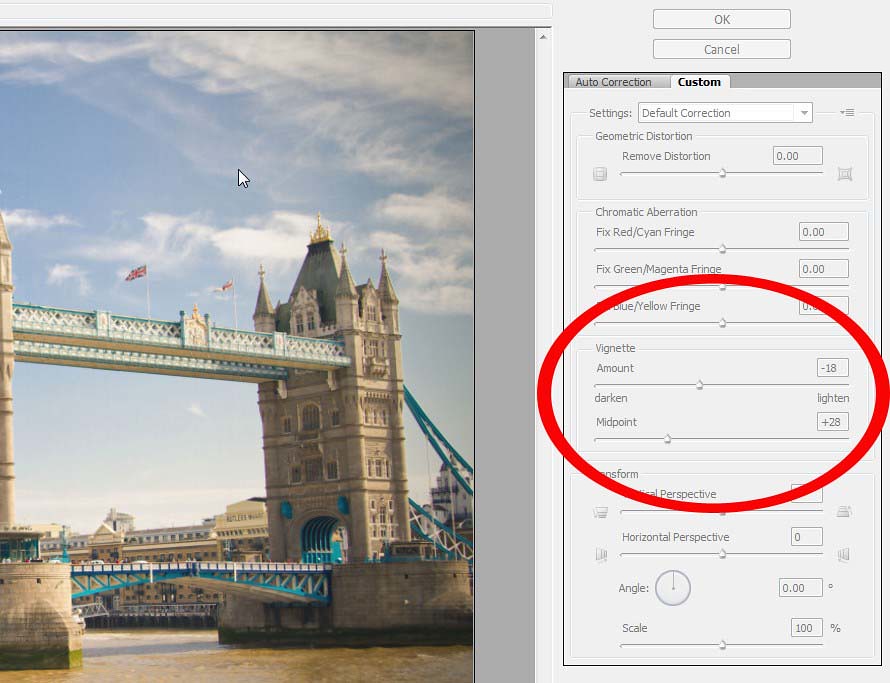

With that said, that's the vintage effect. What do you think? Would you rather just download an action? Here's a link: click HERE. Just in case you forgot, here's my original image on the left and the final vintage edit on the right. Feel free to give this tutorial a try and share your image with us in the comment section.
Friday, March 9, 2012
muse university- photographing books
By now you might get the idea that I love photographing books, as much as I love reading them. It's true. I could spend hours placing pages, in just the right amount of light, to get the photo I am going for. I never tire of the beauty that finds it's way into my lens, when shooting books.
I tried a few shots of this book and my daughter, not really coming up with what I wanted. When I began moving around and trying different angles, I shot over her shoulder. I captured a photo that made me smile, and that my daughter can look back on.
I love these open books plain, but when I added a prop, it really popped the books, while keeping the soft look I love.
Do you have a favorite item or trinket that you photograph? Please share with us in the comment section, I would love to read your words.
I tried a few shots of this book and my daughter, not really coming up with what I wanted. When I began moving around and trying different angles, I shot over her shoulder. I captured a photo that made me smile, and that my daughter can look back on.
I love these open books plain, but when I added a prop, it really popped the books, while keeping the soft look I love.
I usually choose a smaller aperture number when book pages are open, then I set my camera to Al servo or One shot, to see what gives me a more blurry and funky look for the words on the pages. I am constantly playing around with my camera settings, it's the only way I have come to get the photos I am most happy with.
I have often propped a page open with a paper clip or tape. I used a glue dot to hold the string and heart in place for this valentine photo.
Some of these old books were gifts, some I found in second hand stores. There are time I see old photos of my grandparents, from the 1940's and 50's, and if there are books in the background, I have been known to take a magnifying glass, to read the titles. That just interests me, I love to know what others love to read.
Placing flower petals on old tattered books, makes the books even more pretty.
To convey the story you are telling in your photos, sneak books in to help the story along.
Give a peek into your cookbook as you share a recipe.
Here I showed the books my son was reading, for the last couple of months of his being 16. I hope one day he looks back at this photo, and remembers what a star counting, dreamer he was.
Place books in morning light, it will surprise you every time. A casting shadow or a haze, can make all the difference in creating a pretty mood for your book photos.
This post isn't really rocket science, it's filled more with an approach than direction I suppose. To this day, I still carry my camera manual with me. Say it loud and proud, I still rock with my camera manual! lol
I am a passionate book loving, camera toting kinda girl. I hope I have encouraged you to pick up your camera and have fun taking photos of what you love.
I am a passionate book loving, camera toting kinda girl. I hope I have encouraged you to pick up your camera and have fun taking photos of what you love.
Warmly,
Christina {soul aperture}
Friday, February 10, 2012
muse university - My Top Ten Food Photography Tips
Have you had breakfast yet? No? Let me warn you then, you are about to become very hungry if you aren't already are. I'm talking about food photography on this month's Muse University post. If you gave me a choice to shoot anything I wanted I would choose food. Most people love to eat it but I find few people actually ENJOY photographing it. In the past couple of years I have really tried hard to shoot food in all kinds of conditions including restaurants, kitchens, farmers markets and my own table. I cook often so it was a natural marriage of cameras and mixing bowls. Have you ever created something you wanted to photograph every angle of it until you could document it no further? Me too but my creations were always edible. Hundreds of bad shots later I slowly began to take note of what was working. Here are my top 10 tips that have helped me create some delicious looking food shots.
1. Always go with Natural Lighting for the shot. If you can, get right up to a window that faces the same direction as the sun. If the light is too strong use paper towels taped to the glass or hang a translucent piece of white fabric. I use a light weight shower curtain that I hang on the existing rod to filter out direct sunlight.
2. Make sure you are using the correct White Balance. This is huge. White balance is essential in not only making your food look appetizing, but it affects contrast and detail. You can use your in camera WB settings or a simple gray card. If you are really particular about getting it right like I am, there are gadgets like the ExpoDisc ($99) for use with your camera's custom white balance setting. You can read more about the disc and how to use it on my blog the modchik.
3. Add Visual Interest. Add tablecloths, place mats, linens, place settings or glasses to give the photo a more realistic and balanced look. Flowers or part of the ingredients in their natural state surrounding the dish look nice. Remember no one likes a lonely bowl of soup. In the photo below I used a circular patterned napkin from Crate and Barrel because they not only look sharp they reemphasize the round shape of the bowl.
4. Use a clean background you want the focus to remain on the food. If you need to cover the table top try black muslin, you can create some nice curves and shadows with the fabric. Check for remnants at the fabric store avoid shiny or reflective fabrics.
5. Get in CLOSE. From far away this muffin looks like your average baked good. Zoom in on this mouth watering zucchini muffin and you reveal it's been rolled in crispy toasted coconut.
6. Slice it and dig in. You want the viewer to look at that photo, mouth open, ready for a mouthful. Food looks lifeless when it just sits there untouched. Leave some crumbs around evidence of its irresistible deliciousness.
7. Use f/16 as a starting point. I will admit this is a new tip for me. I recently attended a workshop from the husband/wife team House of Brinson (take a moment to go over and feast your eyes on some of their food photography, amazing, go ahead I'll wait). One of the first things they suggested, was to shoot at f/16. This way everything will be in focus from crust edge to crust edge. Of course when you are shooting at this small of an opening, the only way you are going to get a crisp shot is with a tripod. Another trick to help still your camera, turn on Mirror Lock. Most cameras will let you do this through the control panel. When you turn on this feature, the mirror will flip up upon the first depressing of the shutter release, then you press the shutter release a second time to actually take the photograph. Doing this gives the camera time to settle after the mirror flips open. Its takes a little while to get used to pressing the shutter twice, but I find it helps me get quiet and settled when shooting. The mirror lock disables in Auto mode on my camera (Canon).
8. Get out the tripod. If you read #7 this needs no further explanation, but here is another tip from the Brinsons, if you need to get an angle with the tripod where the camera is leaning more to one side, you can fill a water bottle full and slip it into a sock and attach to be used as a counter weight. Look for tripods that have hooks already attached for weights. Even in the darkest of light you'll be able to get your shot.
9. Rack em and stack em. Instead of plating one cookie, give it some visual pizazz by turning your Toll House cookies into the leaning tower of Pisa! Als, add height to the back of the plate, bowl or in this case the rack, this way you are able to see more depth. With such a shallow DOF on the holiday cookies, it is harder to tell. So, if you wanted all the cookies sharp, tilt the back end higher, close down your f-stop to f/16 and get your tripod out (basically tips 7 through 9).
10. Stay away from fried food. Trust me, it's really hard unless you have some good supporting actors next to it like this rack of ribs. In most cases fried anything by itself ends up looking like a greasy mess, so just make sure its in good company.
I want to leave you with one more thing: these were all very technical tips when it comes to shooting plated food. Next time you find yourself photographing food, think about who is eating that food. How is the food prepared? What is the circumstances surrounding the meal? Is there a special occasion? Try capturing the feeling behind the food, culture or sounds of the meal. There is something magical about being able to create a photo that not only highlights the food, but also tells a story. See if you can find it at your next table.
Lindsey | the modchik
1. Always go with Natural Lighting for the shot. If you can, get right up to a window that faces the same direction as the sun. If the light is too strong use paper towels taped to the glass or hang a translucent piece of white fabric. I use a light weight shower curtain that I hang on the existing rod to filter out direct sunlight.
If its too dark I will add simulated outdoor light and white boards or a gold reflector to help fill in dark areas.
2. Make sure you are using the correct White Balance. This is huge. White balance is essential in not only making your food look appetizing, but it affects contrast and detail. You can use your in camera WB settings or a simple gray card. If you are really particular about getting it right like I am, there are gadgets like the ExpoDisc ($99) for use with your camera's custom white balance setting. You can read more about the disc and how to use it on my blog the modchik.
 |
The expodisc comes in various sizes, this is the 77mm. I used it to correct the color below. |
3. Add Visual Interest. Add tablecloths, place mats, linens, place settings or glasses to give the photo a more realistic and balanced look. Flowers or part of the ingredients in their natural state surrounding the dish look nice. Remember no one likes a lonely bowl of soup. In the photo below I used a circular patterned napkin from Crate and Barrel because they not only look sharp they reemphasize the round shape of the bowl.
 |
| Be careful of your backgrounds, I had a bright window in the background, could have diffused the light to avoid the blue spot. |
5. Get in CLOSE. From far away this muffin looks like your average baked good. Zoom in on this mouth watering zucchini muffin and you reveal it's been rolled in crispy toasted coconut.
 |
| Zoom in close enough and you also blur out the fact that this muffin sits a top a fancy paper plate. |
6. Slice it and dig in. You want the viewer to look at that photo, mouth open, ready for a mouthful. Food looks lifeless when it just sits there untouched. Leave some crumbs around evidence of its irresistible deliciousness.
7. Use f/16 as a starting point. I will admit this is a new tip for me. I recently attended a workshop from the husband/wife team House of Brinson (take a moment to go over and feast your eyes on some of their food photography, amazing, go ahead I'll wait). One of the first things they suggested, was to shoot at f/16. This way everything will be in focus from crust edge to crust edge. Of course when you are shooting at this small of an opening, the only way you are going to get a crisp shot is with a tripod. Another trick to help still your camera, turn on Mirror Lock. Most cameras will let you do this through the control panel. When you turn on this feature, the mirror will flip up upon the first depressing of the shutter release, then you press the shutter release a second time to actually take the photograph. Doing this gives the camera time to settle after the mirror flips open. Its takes a little while to get used to pressing the shutter twice, but I find it helps me get quiet and settled when shooting. The mirror lock disables in Auto mode on my camera (Canon).
 |
9. Rack em and stack em. Instead of plating one cookie, give it some visual pizazz by turning your Toll House cookies into the leaning tower of Pisa! Als, add height to the back of the plate, bowl or in this case the rack, this way you are able to see more depth. With such a shallow DOF on the holiday cookies, it is harder to tell. So, if you wanted all the cookies sharp, tilt the back end higher, close down your f-stop to f/16 and get your tripod out (basically tips 7 through 9).
10. Stay away from fried food. Trust me, it's really hard unless you have some good supporting actors next to it like this rack of ribs. In most cases fried anything by itself ends up looking like a greasy mess, so just make sure its in good company.
I want to leave you with one more thing: these were all very technical tips when it comes to shooting plated food. Next time you find yourself photographing food, think about who is eating that food. How is the food prepared? What is the circumstances surrounding the meal? Is there a special occasion? Try capturing the feeling behind the food, culture or sounds of the meal. There is something magical about being able to create a photo that not only highlights the food, but also tells a story. See if you can find it at your next table.
Lindsey | the modchik
Labels:
food,
lindsey,
muse university
Friday, January 13, 2012
muse university - 5 tips for documenting the decisive moment
It's happened. Your love affair with photography has taken a turn blossoming into something deep, meaningful, and everlasting. You've started shooting everywhere you go, the grocery store, the gas station, the mall, documenting every aspect of the world around you. Only there's something missing. Despite the fact that you've filled your memory card for the 50th time, you've noticed you've only got three great shots to show for it. So what gives? Perhaps its time to streamline your craft in search of the decisive moment. That instantaneous second when all the elements of an image are expertly rolled into one fantastic shot creating magic. The kind of magic we want to view again and again. Henri Cartier-Bresson, 20th Century French photographer, widely considered to be the father of modern photojournalism, put it more succinctly when he said, "There is a creative fraction of a second when you are taking a picture. Your eye must see a composition or an expression that life itself offers you, and you must know with intuition when to click the camera. That is the moment the photographer is creative."
Here are five tips for finding & documenting your own decisive moments.
1. Plan Ahead
Sometimes the perfect setup is obvious. You're in a specific location or situation where something memorable is going to happen. Think wedding or birthday party, festival or event. Right there, half your work is done, you can already envision the image. Next, try to get your settings nice and tight before taking the shot. Depending on your level of experience, how much time you put into this will vary. If you're a newbie when it comes to changing camera settings on the fly, get in position and shoot some test shots of the surrounding area to get a feel for the light. If you're worried about missing that specific split-second, don't hesitate to shoot in burst mode giving you at least two or three chances to get it right.
This was shot at the Rittenhouse Row Festival in Center City Philadelphia. The setup was obvious; we all knew what was going to happen. While the performers arranged the final moment of their act, I moved into position with plenty of time to assess the light and line up the lens flare with the figures in the middle.
2. Practice Patience & Wait
Now that you're in position and have assessed your situation (taken those test shots), it's time to wait for the decisive moment to happen. Go back to the old adage "Patience is a virtue," and observe what's happening around you. Don't hesitate to throw in a deep breath or two to keep yourself calm so you don't give in to the impulse to start shooting haphazardly. Imagine yourself shooting film, where every frame on that roll of 24 exposures counts. You'd only give the moment 2 or 3 takes at most then, right? So allow the decisive moment to come to you, and don't give up hope when it doesn't happen right away.
The lead singer of this band repeatedly sank down on his knees during his performance. I stabilized my camera by setting it down on the edge of the stage and waited for him to repeat his act. When he finally looked my way, I knew I had my shot.
3. Turn on Your Emotional Radar
Feel your way to shooting the decisive moment. Look for displays of emotion around you, simple gestures that tell a story, animated expressions and exaggerated motions. Follow along with conversations so that you can predict what might happen next. Observe your surroundings searching for compositional elements that lend themselves to an interesting shot. Having a strong understanding of composition will help you recognize and feel the right balance between tension and emotion within your frame, so that when the action begins to unfold, you're ready to recognize just the right moment to shoot.
I was out to dinner with a friend when these two sat down. I immediately recognized that they'd set the shot up for me by sitting down perfectly framed by the bar's mirror. It took some time before they finally turned towards one another, smiling and laughing, without the bartender in front of them for me to get my shot.
4. Trust Your Instincts; Release Those Fears
Ever have a photographic hunch, but because you thought you should be shooting one way, perhaps in a more traditional manner, you didn't take the shot? Often its an unusual angle or unique perspective that grabs our attention the most. Don't be afraid to experiment with your photography. Practice looking at your subjects from all angles, so that when the moment presents itself, you're ready to see it. Also, don't be afraid to raise your camera when you recognize a good shot whether its at home or in public. Having confidence in trusting your intuition will go a long way in capturing the decisive moment.
On a visit to our home, my nephew desperately wanted to play with our dog, Major, but was afraid him because of his loud barking, a fact that clearly upset him. Finally, on the 3rd day of the visit, he worked up the courage to stand beside Major and watch a tractor-trailer that was stuck on the block. I wanted to find a way to shoot the two of them together showcasing the fragile bond forming between them. My nephew's footy pajamas featuring dogs captured my eye, and I knew I'd found my shot.
5. Forget Perfection
Yep, that's right, sometimes, the perfect picture isn't necessarily the most technically sound. In fact, it might be this fact alone that creates your image. Often, we censor ourselves and our work based on the technical perfection of our product. To be sure, technical proficiency is important, but before disregarding a photo as unsound, ask yourself if all the avow elements are present. Do you still get an emotional response from the image? Does your intuition tell you that it holds appeal? Sometimes sitting back for a day or two before weeding out the "bad" ones can help. And remember to go easy on yourself. It's a process of continued growth, and before you know it, you'll be seeing, and capturing, decisive moments whenever you pick up your camera.

I was getting set to shoot the pretzel sculpture above in a neighborhood park when I noticed this little girl running perfectly into my frame. I was so excited at this stroke of luck, that I forgot to change the shutter speed when adjusting my settings. It happened so quickly! When I realized my mistake, I was very disappointed. It was only later, that I realized capturing the motion blur, in fact, made the shot.
And last, but not least, and the one thing you have no control over, but can sometime play a huge roll in capturing the decisive moment: LUCK! Of course, when you've taken control of the above steps, your chances are much greater that everything will fall perfectly together. But once in a big while, the stars will align just for you and this final element will push your shot over the edge and everything in it will come into place as though it'd been scripted for the scene.
I was aiming to shoot the crowd watching a band at "The Party on the Parkway" for Philadelphia's Fourth of July celebration. In order to capture this moment, I set my camera to AV (aperture priority) mode, held it over my head and aiming as best as I could, clicked. My actions caught the attention of the man in the center who looked directly at the camera at exactly the right moment. I couldn't have been happier with the results. Ok, to be honest, if I'd aimed slightly lower, my composition would have been more complete, but in the end, I was thrilled that I hadn't cut off his feet!
I hope you've found these points helpful, and are ready to go out and look for decisive moments of your own to shoot. With a lot of practice, a lot of patience, and plenty of intentional focus, you'll find yourself reacting to decisive moments without excessive thought. Instead, you will be ready to capture them as they unfold around you. Do you have any other tips or tricks that you use to nail that precise moment? Share with us in comments to keep the dialog going!
Holly ~ Soupatraveler
Here are five tips for finding & documenting your own decisive moments.
1. Plan Ahead
Sometimes the perfect setup is obvious. You're in a specific location or situation where something memorable is going to happen. Think wedding or birthday party, festival or event. Right there, half your work is done, you can already envision the image. Next, try to get your settings nice and tight before taking the shot. Depending on your level of experience, how much time you put into this will vary. If you're a newbie when it comes to changing camera settings on the fly, get in position and shoot some test shots of the surrounding area to get a feel for the light. If you're worried about missing that specific split-second, don't hesitate to shoot in burst mode giving you at least two or three chances to get it right.
This was shot at the Rittenhouse Row Festival in Center City Philadelphia. The setup was obvious; we all knew what was going to happen. While the performers arranged the final moment of their act, I moved into position with plenty of time to assess the light and line up the lens flare with the figures in the middle.
2. Practice Patience & Wait
Now that you're in position and have assessed your situation (taken those test shots), it's time to wait for the decisive moment to happen. Go back to the old adage "Patience is a virtue," and observe what's happening around you. Don't hesitate to throw in a deep breath or two to keep yourself calm so you don't give in to the impulse to start shooting haphazardly. Imagine yourself shooting film, where every frame on that roll of 24 exposures counts. You'd only give the moment 2 or 3 takes at most then, right? So allow the decisive moment to come to you, and don't give up hope when it doesn't happen right away.
3. Turn on Your Emotional Radar
Feel your way to shooting the decisive moment. Look for displays of emotion around you, simple gestures that tell a story, animated expressions and exaggerated motions. Follow along with conversations so that you can predict what might happen next. Observe your surroundings searching for compositional elements that lend themselves to an interesting shot. Having a strong understanding of composition will help you recognize and feel the right balance between tension and emotion within your frame, so that when the action begins to unfold, you're ready to recognize just the right moment to shoot.
I was out to dinner with a friend when these two sat down. I immediately recognized that they'd set the shot up for me by sitting down perfectly framed by the bar's mirror. It took some time before they finally turned towards one another, smiling and laughing, without the bartender in front of them for me to get my shot.
4. Trust Your Instincts; Release Those Fears
Ever have a photographic hunch, but because you thought you should be shooting one way, perhaps in a more traditional manner, you didn't take the shot? Often its an unusual angle or unique perspective that grabs our attention the most. Don't be afraid to experiment with your photography. Practice looking at your subjects from all angles, so that when the moment presents itself, you're ready to see it. Also, don't be afraid to raise your camera when you recognize a good shot whether its at home or in public. Having confidence in trusting your intuition will go a long way in capturing the decisive moment.
On a visit to our home, my nephew desperately wanted to play with our dog, Major, but was afraid him because of his loud barking, a fact that clearly upset him. Finally, on the 3rd day of the visit, he worked up the courage to stand beside Major and watch a tractor-trailer that was stuck on the block. I wanted to find a way to shoot the two of them together showcasing the fragile bond forming between them. My nephew's footy pajamas featuring dogs captured my eye, and I knew I'd found my shot.
5. Forget Perfection
Yep, that's right, sometimes, the perfect picture isn't necessarily the most technically sound. In fact, it might be this fact alone that creates your image. Often, we censor ourselves and our work based on the technical perfection of our product. To be sure, technical proficiency is important, but before disregarding a photo as unsound, ask yourself if all the avow elements are present. Do you still get an emotional response from the image? Does your intuition tell you that it holds appeal? Sometimes sitting back for a day or two before weeding out the "bad" ones can help. And remember to go easy on yourself. It's a process of continued growth, and before you know it, you'll be seeing, and capturing, decisive moments whenever you pick up your camera.

I was getting set to shoot the pretzel sculpture above in a neighborhood park when I noticed this little girl running perfectly into my frame. I was so excited at this stroke of luck, that I forgot to change the shutter speed when adjusting my settings. It happened so quickly! When I realized my mistake, I was very disappointed. It was only later, that I realized capturing the motion blur, in fact, made the shot.
And last, but not least, and the one thing you have no control over, but can sometime play a huge roll in capturing the decisive moment: LUCK! Of course, when you've taken control of the above steps, your chances are much greater that everything will fall perfectly together. But once in a big while, the stars will align just for you and this final element will push your shot over the edge and everything in it will come into place as though it'd been scripted for the scene.
I was aiming to shoot the crowd watching a band at "The Party on the Parkway" for Philadelphia's Fourth of July celebration. In order to capture this moment, I set my camera to AV (aperture priority) mode, held it over my head and aiming as best as I could, clicked. My actions caught the attention of the man in the center who looked directly at the camera at exactly the right moment. I couldn't have been happier with the results. Ok, to be honest, if I'd aimed slightly lower, my composition would have been more complete, but in the end, I was thrilled that I hadn't cut off his feet!
I hope you've found these points helpful, and are ready to go out and look for decisive moments of your own to shoot. With a lot of practice, a lot of patience, and plenty of intentional focus, you'll find yourself reacting to decisive moments without excessive thought. Instead, you will be ready to capture them as they unfold around you. Do you have any other tips or tricks that you use to nail that precise moment? Share with us in comments to keep the dialog going!
Holly ~ Soupatraveler
Friday, November 18, 2011
muse university - seven secrets to photographing your children
One of the main reasons I started up on this photography lark was to try and capture those fleeting moments of my children's childhoods. Here are are some of the techniques I use to try and help snap those moments.
1. Take your camera everywhere with you. And by that, I mean everywhere. To the shops, on the train, on the school run; everywhere!
Here's Miles on a visit to his grandmother's house. When I couldn't find him, I grabbed my camera and looked around the house knowing that he would have found something interesting to do, eventually finding him by the pond, dipping for newts. The light was so perfect as he trawled through the muddy water.
2. Include your little people in your photographic projects. Ella and Miles know all about fences and benches, and sometimes even like to join in, although Miles can be a little indecisive at times! It's a fun thing to do together as a family. You could always give them a camera of their own if you really want to encourage them. Ella loves to take pictures on her iPod touch using Instagram.
While caught in the rain, I bought Miles this monster umbrella, so we had to do a bench shot with it! It took us a while to make the monster look as menacing as possible.
3. Try using black and white for a "time machine" effect. It's amazing how it can make people look much younger or older. With children, sometimes you get a glimpse of their younger selves, or a sense of what they will look like when they grow up.
I took this picture of Ella while in Pienza, Italy. She looks much older than her years in this picture, and I could suddenly imagine her as a teenager.
4. Photograph the little details. The things they make, their hands, the things they treasure. They will always have stories to tell about them when they are older.
Here is a picture of Ella and her best friend, making cat's cradles. It's something they have enjoyed doing together for the last few years, but I know it will be something they will grow out of. I hope they will cherish the memory of this moment when they are older.
5. Keep your distance. Shoot from far away, or creep up on them. It doesn't matter if their faces aren't in the picture; often their gestures or their silhouettes are all that's necessary to capture the mood.
I caught this while on holiday in Italy. Ella was catching her breath after diving into the pool all afternoon. I love to imagine what she was thinking as she looked at the view.
6. Don't be afraid to direct them. I often ask my children to stand in magical light, or to pose for me. Lindsey sometimes asks children to look at the dinosaur in the camera; I like to ask Ella and Miles to pretend they know a secret for that wistful look.
While Ella was blowing this dandelion, I asked her to make the most epic but secret wish she could (she loves the word epic, so I knew I was onto a winner there). I love the mood her look added to the picture.
7. If all else fails, try a jump shot!
With this picture I was supposed to be practising colour palettes and the rule of thirds. But when we got to the location, Miles looked at me and said he wasn't going to pose for me because he was too cold. So I asked him to jump!
Most of all, enjoy yourself! Do you use any of these tricks? What are your secrets? Let us know in the comments.
kirstin of fleeting moments.
1. Take your camera everywhere with you. And by that, I mean everywhere. To the shops, on the train, on the school run; everywhere!
Here's Miles on a visit to his grandmother's house. When I couldn't find him, I grabbed my camera and looked around the house knowing that he would have found something interesting to do, eventually finding him by the pond, dipping for newts. The light was so perfect as he trawled through the muddy water.
2. Include your little people in your photographic projects. Ella and Miles know all about fences and benches, and sometimes even like to join in, although Miles can be a little indecisive at times! It's a fun thing to do together as a family. You could always give them a camera of their own if you really want to encourage them. Ella loves to take pictures on her iPod touch using Instagram.
While caught in the rain, I bought Miles this monster umbrella, so we had to do a bench shot with it! It took us a while to make the monster look as menacing as possible.
3. Try using black and white for a "time machine" effect. It's amazing how it can make people look much younger or older. With children, sometimes you get a glimpse of their younger selves, or a sense of what they will look like when they grow up.
I took this picture of Ella while in Pienza, Italy. She looks much older than her years in this picture, and I could suddenly imagine her as a teenager.
4. Photograph the little details. The things they make, their hands, the things they treasure. They will always have stories to tell about them when they are older.
Here is a picture of Ella and her best friend, making cat's cradles. It's something they have enjoyed doing together for the last few years, but I know it will be something they will grow out of. I hope they will cherish the memory of this moment when they are older.
5. Keep your distance. Shoot from far away, or creep up on them. It doesn't matter if their faces aren't in the picture; often their gestures or their silhouettes are all that's necessary to capture the mood.
I caught this while on holiday in Italy. Ella was catching her breath after diving into the pool all afternoon. I love to imagine what she was thinking as she looked at the view.
6. Don't be afraid to direct them. I often ask my children to stand in magical light, or to pose for me. Lindsey sometimes asks children to look at the dinosaur in the camera; I like to ask Ella and Miles to pretend they know a secret for that wistful look.
While Ella was blowing this dandelion, I asked her to make the most epic but secret wish she could (she loves the word epic, so I knew I was onto a winner there). I love the mood her look added to the picture.
7. If all else fails, try a jump shot!
With this picture I was supposed to be practising colour palettes and the rule of thirds. But when we got to the location, Miles looked at me and said he wasn't going to pose for me because he was too cold. So I asked him to jump!
Most of all, enjoy yourself! Do you use any of these tricks? What are your secrets? Let us know in the comments.
kirstin of fleeting moments.
Labels:
kirstin,
muse university
Friday, October 21, 2011
muse university - 10 tips for getting started with self-portraits
getting started with self-portraits
by christy of urban muser
The self-portrait--or selfie. You either dread them or you love them. I used to be squarely in the dread camp, but with some practice over the past year I've gotten a little more comfortable on the other side of the lens. Let's face it, one of the nice things about shooting a selfie is that you always have your subject with you, you have complete artistic and technical control, and you can shoot, delete and edit multiple images until you are satisfied.
I often get comments and questions on my blog from people saying they are too timid to take a self-portrait. And since that used to be me, it got me to thinking about my own journey and how I was able to overcome the fear (for the most part--I am still working on it!) of seeing myself within the frame. So let's get started--remember, I am no expert, these are just a bunch of different ideas to try out if you've been thinking of exploring the world of self-portraiture...
1. Keep it simple--try a selfie with your mobile phone.
Sometimes the thought of a fancy DSLR with a big lens and a tripod can be a little daunting. So if you have a mobile phone, try turning it on yourself at arm's length and just snapping a simple, no pressure photo of yourself. If your mobile phone's camera doesn't have a self-timer or a press anywhere shutter, look for an app that will provide this functionality. And of course, if you are shy about showing your face, there's nothing like processing your photo with a few good apps to ease yourself into slowly showing the world your beautiful face.
2. Keep an eye out for your reflection.
When I first started taking self-portraits I ended up with a lot of reflections (come to think of it, I still take many reflective selfies). Mirrors, store windows, puddles, building facades--these are all great places to begin. These photos can be a fun and easy way to slide into self-portraiture, especially if you have an interesting background or a unique reflective surface.
3. Don't be afraid to go undercover.
Self-portraits don't always have to show exactly who you are. Use creative angles and crops--focus in on your feet, purposely cut off your head, obscure parts of yourself here and there. Remember, you're in charge. These photos can show all of you, or just a little piece of you. It's OK to be anonymous once in a while and keep the mystery alive!
4. Big world, tiny you.
Self-portrait doesn't always mean close-up. You can still be the subject of the photo without dominating the entire frame. If you find a beautiful background, landscape or open space try a distant or wide angle shot and subtly insert yourself somewhere in the scene.
{"absence is to love what wind is to fire; it extinguishes the small, it rekindles the great." by 6ftmama}
Self-portraits are a great way to express how you are feeling. Sometimes a facial expression or scene can convey an emotion. Or you can go a more direct route and tell your viewers exactly what you are thinking.
6. Play a character, or use a prop!
Just because we're not 8 years old anymore doesn't mean we can't play make believe. Sometimes it's easier to take a picture of ourselves if we are not exactly ourselves. Role play, dress up, wear a wig, or add a fun prop into the mix. Just try it, you may be surprised with the results!
7. Say something about yourself.
Take a portrait of yourself with someone or something that you love. Remember, selfies aren't just about what you look like on the outside, but who you are inside.
8. Have some fun!
If you are nervous about getting in front of the camera, try doing something silly to take your mind off of how you look. A jump shot can usually do the trick here. Try jumping with you arms outstretched, turn your body a little to the side and kick your heels as hard as you can to you butt so it really looks like you are high off the ground. I had to practice this for a while before I got a good one, but it definitely made me forget about all the reasons that I DIDN'T want to be on that side of the lens. Oh, and twirling works really well here too :)
9. Hide within the blur.
Who says your self-portraits have to be in perfect focus? While you are getting used to seeing your gorgeous self in your images, try softening the blow by adding a little blur--either when you take the photo, or in post-processing. When you begin taking self-portraits you may even find yourself out of focus by mistake. Before you delete these images, take a second look to see if perhaps you've captured a happy accident!
10. Make friends with your self-timer and/or remote control.
Most cameras these days have some kind of self-timer on them, which makes self-portraits a lot easier. When I use my self-timer I sometimes put an object in the spot that I'm going to run to and press the shutter half-way down to set the focus. Then I run into the shot, quickly remove my stand-in item and voila, the shot's in focus. A wireless remote can take the running element out of the equation and that can be nice (mine's broken so I haven't used it in a while). A tripod helps too!
11. Join a group or project. (I know the title of this post is 10 tips, but here's a bonus one!)
What can I say? There's inspiration in numbers. Consider joining a flickr group dedicated to self-portraits. Browse through the selfies and you'll find yourself amazed and inspired by the creativity and uniqueness in all of us! I especially like 52 Weeks of BAM. It's a no pressure group that gave me just the little push I needed to take 52 self-portraits this year.

{BAM! I Jig Spontaneously With My Camera by SnapYappy}
OK, so that's all for now. If you made it to the end of this post, I thank you for sticking around! I hope one or two of these tips will help you find a little more comfort in front of the camera. Take it one step at a time, and ease yourself around to the other side of the lens. Who knows, you may like what you see.
~christy {urban muser}
Subscribe to:
Posts (Atom)

